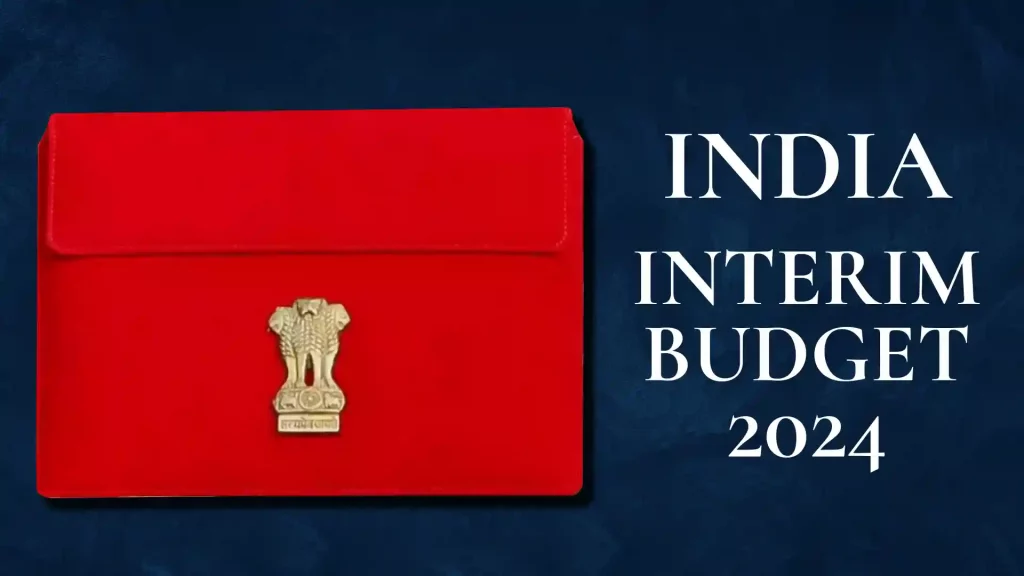The major focus was on maximizing India’s macroeconomic growth and trimming down the fiscal deficit.
India’s Finance Minister Nirmala Sitharaman announced the Interim Budget 2024 in the Parliament yesterday, on February 1. The major focus was on maximizing India’s macroeconomic growth and trimming down the fiscal deficit.
Two months down the line, in April and May, the country will vote in the Lok Sabha elections to elect the federal government. Hence, yesterday’s budget was an Interim Budget or a Vote on Account, which is an extensive annual budget. In July, the newly elected government will present the new complete Budget in July this year.
Sitharaman revealed the government plans to spend almost $134 billion or Rs 11.11 lakh crore as capital expenditure on infrastructure. It marks a staggering increase of 11.1% from last year’s budget allocation. This would amount to 3.4% of the GDP.
She said that Prime Minister Modi’s administration has set a fiscal deficit target of 5.1% for the next fiscal year starting April 1. It has been reduced from the current year’s deficit of 5.8%.
The plan to contract the fiscal deficit to 5.1% of GDP will help the government to improve the sovereign credit rating for the economy in the near future. Currently, the Indian economy is rated at BBB- by S&P and Fitch Ratings.
The FM has announced the withdrawal of old and disputed direct tax demands. This will provide relief to over 10 million taxpayers. The tax structure of direct and indirect tax remains unchanged, including import duties.
The government aims at a gross market borrowing of $170 billion and net market borrowings of $141 billion via dated securities in FY2024-25.
The FM informed that the total receipts other than borrowings amount to $332 billion, and expenditures are estimated to be around $541 billion. The revenue receipts at $361 billion are expected to be higher than estimates.
Three major railway corridor programs will be executed, besides corridors for cement, energy, mineral, and port connectivity. Furthermore, 40,000 normal railway coaches will be remodeled into the flagship Vande Bharat train standards for better convenience, improved safety, and comfort for passengers.
A major announcement made was the scheme of 50-year interest-free loans for capital expenditure to states. A fund of $120 billion will be set up for disbursement with a total outlay capacity of $156 billion. This is aimed at providing low to nil-interest-rate loans for a longer tenure to private-sector entrepreneurs for R&D.
The FM said that government authorities are in active negotiation for bilateral investment treaties with developed countries for FDI. She coined a different abbreviation for FDI as ‘first development in India’ and for Governance, Development, and Performance.
She announced that over 10 million households will receive 300 units of free electricity through government-budgeted rooftop solar installation.
The government will pay special attention to building homes in the eastern parts of India. The PM Awas Yojana (Grameen) will build 20 million houses over the 30 million already built in the next five years to fulfill the requirements of an increase in population.
Some sector-specific initiatives were focused on agriculture with plans like Nano DAP for various crops and implemented for all kinds of climate zones and Atmanirbhar Oil Seeds Abhiyan to provide quality seeds to the lower section of farmers.
She announced a comprehensive plan to support dairy farmers of the world’s largest milk producer. The government dairy plan will be added to exacting schemes like the Rashtriya Gokul Mission and Infrastructure Development Funds for dairy processing and animal husbandry.
The central government will establish five integrated aqua parks throughout the country. The Pradhan Mantri Matsya Sampada scheme will take measures to boost aquaculture from three to five tons per hectare.
She announced that India has promised to achieve net zero carbon emissions by the end of 2070. Measures like funding for offshore wind energy projects with 1 GW capacity, coal gasification and liquefaction capacity of 100 MT to be established by 2030, and, phased compulsory blending of compressed biogas in compressed natural gas, etc.
The government has asked states to come up with development plans for famed tourist destinations to promote and market them on a global scale. Port connectivity, tourism infrastructure, and other facilities are to be built by long-term interest-free loans by the central government.
FM Nirmala Sitharaman’s interim budget is a temporary plan for April to July, considering the elections. She is confident of an electoral win and has promised to outline a roadmap for Viksit Bharat (developed India) in the final comprehensive budget.
